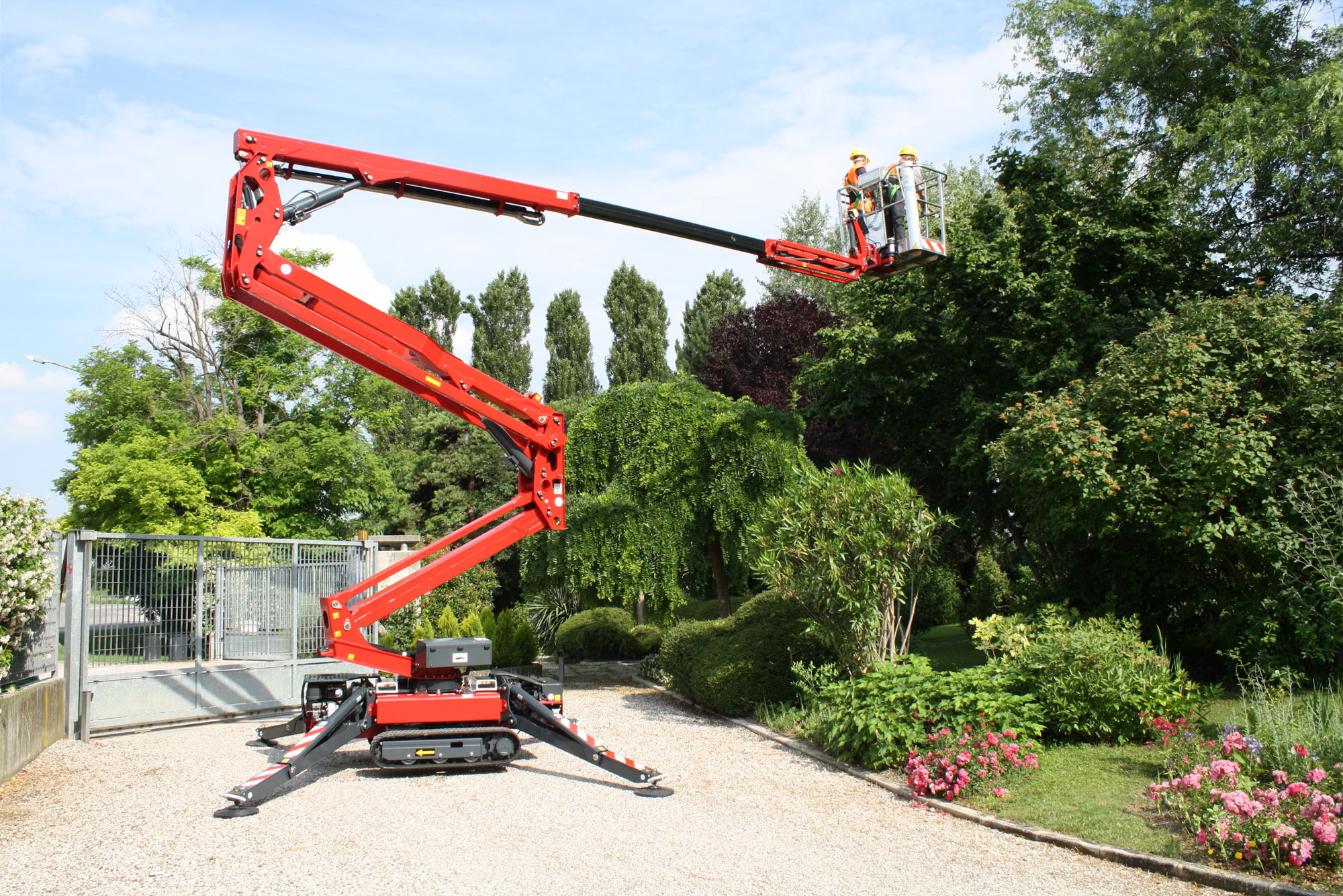Spider lifts are a type of aerial lift that are commonly used for tree trimming and pruning. These lifts are known for their unique design, which allows them to access tight spaces and challenging terrain that would be difficult for other types of lifts to reach. In this blog, we will explore the benefits of using a spider lift for tree trimming and pruning, as well as its versatility and durability.
What is a spider lift?
A spider lift is a type of aerial lift that is characterized by its compact size and unique design. Unlike traditional lifts, which are mounted on a single base, spider lifts have multiple legs that extend outward from a central platform. This allows them to distribute their weight evenly and access tight spaces and challenging terrain that other lifts cannot reach.
Spider lifts are typically equipped with a telescoping boom that can extend upwards, allowing the operator to reach high branches and other elevated areas. They are also equipped with a variety of controls and safety features, such as outriggers to stabilize the lift and prevent tipping, and an automatic levelling system that keeps the platform level as the lift moves.
Benefits of using a spider lift for tree trimming and pruning?
One of the key benefits of using a spider lift for tree trimming and pruning is improved safety. Traditional methods of trimming and pruning, such as using ladders or climbing equipment, can be dangerous and can put workers at risk of falls and other injuries. In contrast, spider lifts are equipped with a range of safety features, such as outriggers to stabilize the lift and prevent tipping, and an automatic levelling system to keep the platform level as the lift moves. This can help to reduce the risk of accidents and injuries on the job site.
Another advantage of using a spider lift for tree trimming and pruning is improved precision. Because spider lifts are able to access tight spaces and challenging terrain, they can provide a clear view of the work area, allowing the operator to make precise cuts and avoid damaging nearby structures or plants. This can help to ensure that the tree is trimmed and pruned properly, without causing unnecessary damage.
Additionally, using a spider lift for tree trimming and pruning can improve efficiency. Because spider lifts are able to reach high branches and other elevated areas, they can reduce the need for workers to climb ladders or use other equipment to access these areas. This can save time and effort, and can help to reduce the overall cost of the project.

Versatility of spider lifts
In addition to tree trimming and pruning, spider lifts can also be used for a variety of other tasks. These lifts are versatile and can be used for a range of applications, including building maintenance and sign installation.
For building maintenance, spider lifts can be used to perform tasks such as cleaning windows, painting and repairing exteriors, and inspecting roofs and gutters. Because spider lifts are able to access tight spaces and challenging terrain, they can provide a clear view of the work area, allowing workers to complete these tasks safely and efficiently.
Spider lifts can also be used for sign installation. Because of their compact size and ability to access tight spaces, spider lifts can be used to install signs in a variety of locations, including on buildings, poles, and other structures. This can help to ensure that signs are installed properly and securely, without the need for ladders or other equipment.
Compact design
One of the key advantages of spider lifts is their compact design, which makes them ideal for use in tight spaces and challenging terrain. Unlike traditional lifts, which are mounted on a single base, spider lifts have multiple legs that extend outward from a central platform. This allows them to distribute their weight evenly and access areas that other lifts cannot reach.
The compact size of spider lifts also makes them more manoeuvrable than other types of aerial lifts. Because they have multiple legs, spider lifts can move in any direction, allowing them to navigate around obstacles and access tight spaces with ease. This makes them ideal for use in urban environments and other locations where space is limited.
Additionally, the compact design of spider lifts makes them easier to transport and store than other types of lifts. Because they are smaller and more lightweight, spider lifts can be loaded onto a trailer or transported in a truck bed, making them more convenient to transport to and from job sites.
Conclusion
In conclusion, spider lifts are a valuable tool for tree trimming and pruning, offering a number of advantages over traditional methods. These lifts are versatile and can be used for a variety of tasks, including building maintenance and sign installation.
They are also compact and manoeuvrable, making them ideal for use in tight spaces and challenging terrain.
Additionally, spider lifts are equipped with a range of safety features, such as outriggers to stabilize the lift and prevent tipping, and an automatic levelling system to keep the platform level as the lift moves. This can help to reduce the risk of accidents and injuries on the job site.
Overall, if you are in need of a lift for tree trimming and pruning, we encourage you to consider using a spider lift. These lifts offer a number of benefits and can help to make your project safer, more precise, and more efficient.


